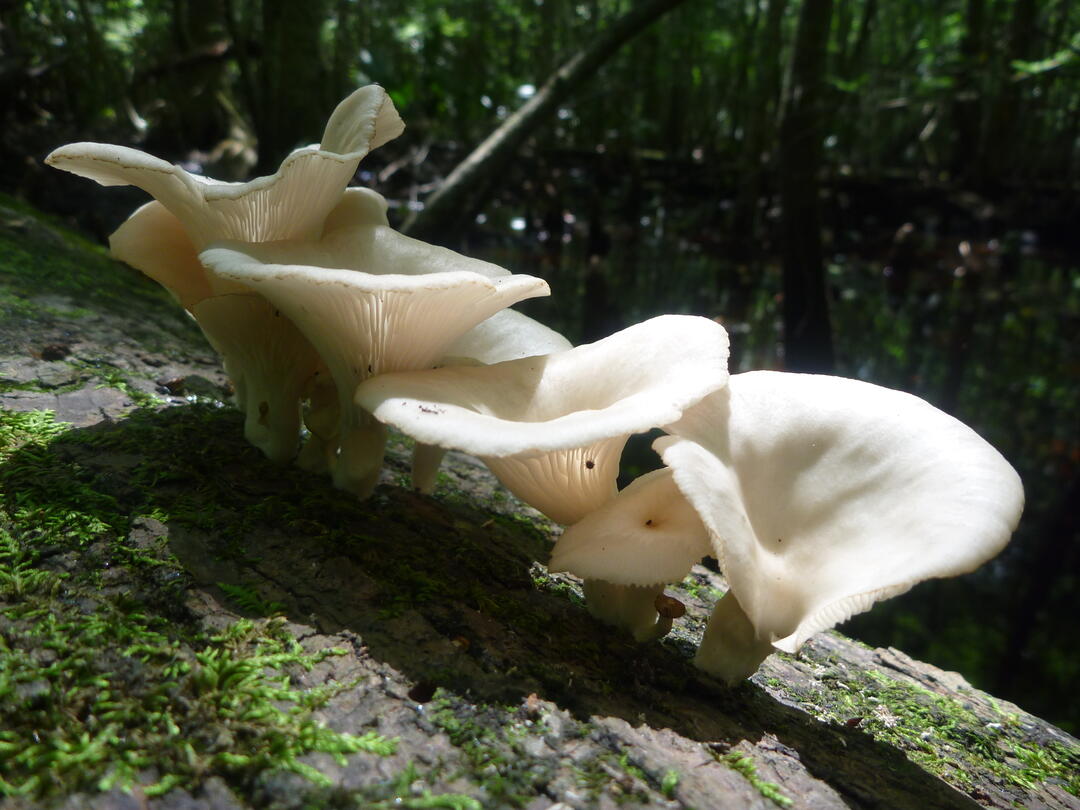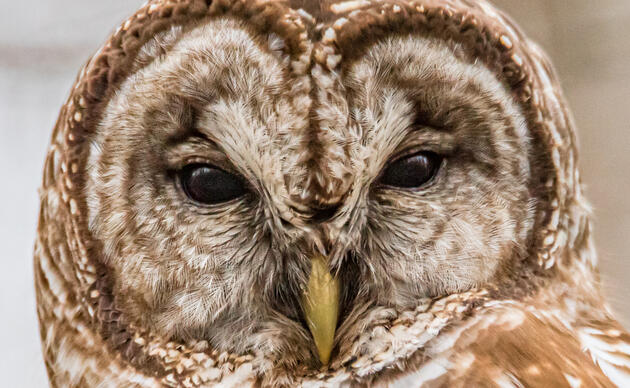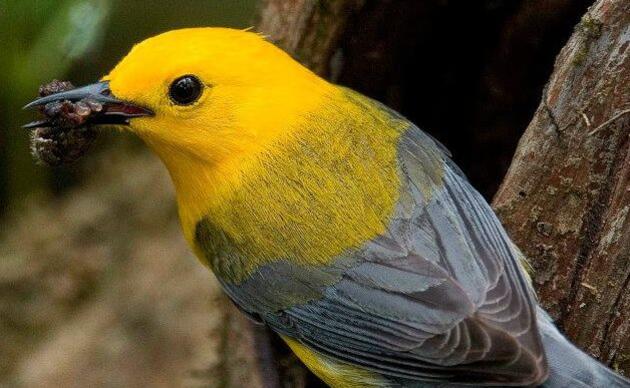Fungi are critical but often overlooked components of a healthy ecosystem. With an old growth forest, dead trees are very common, and so are the lifeforms that decompose them. This list is far from complete as fungi are secretive, can be difficult to discern from one another, and there has been no official survey done. Instead we've highlighted some of the more showy and commonly seen species. The best time to see fungi in the swamp is when the water is low, usually mid-summer through mid-fall, and fungi enthusiasts should not neglect our parking lot, where a lot of interesting species can also appear during times of the year.
Note: Please do not collect fungi off our boardwalk or anywhere else on our property. This is a nature sanctuary.
Mushrooms
- Lion's Mane Mushroom (Hericium erinaceus)
- Indigo Mushroom (Lactarius indigo)
- Chicken of the Woods (Laetiporus sp.)
- Giant Puffball (Calvatia gigantea)
- Column Stinkhorn (Clathrus columnatus)
- American Caesar's Amanita (Amanita jacksonii)
- Turkey Tail (Trametes versicolor)
- False Turkey-tail (Stereum ostrea)
- Cauliflower Mushroom (Sparassis Radicata)
- Oyster Mushrooms (Probably one or both: Indian Oyster (Pleurotus pulmonarius), Oyster Mushroom (Pleurotus ostreatus))
- Coral fungus (Ramaria sp.)
Pecky Rot Fungus (Laurilia taxodii) - While you're not likely to see this fungi, you may see evidence of it with fallen Bald Cypress. This fungus hollows vertical columns up the through the heartwood of living cypress trees, which probably begins the process of large cypress becoming completely hollow.
Lichens
There are many lichens in the swamp, but there's only one that really grabs attention. Christmas Lichen (Cryptothecia rubrocincta), while not a rare species in the southeast by any means, occurs in only one place that we know of on the property, on an ancient cypress tree at the end of the canoe trail. Why it is there, how it got there, and why it doesn't seem to appear anywhere else in the swamp are questions that remain unanswered. Considering the lifespan of lichen, it could be just as old as the ancient tree it's growing on, a relict from a time past.
How you can help, right now
Boardwalk Tickets
We're open Wednesdays thru Saturdays 9 AM to 5 PM and
Sundays 11 AM to 4 PM.
Beidler Membership
Click here to purchase a membership, which provides free admission for a year and other benefits. We offer both Individual and Family Memberships.
Donate to Beidler Forest
If you wish to support us, please consider donating. 100% of your donation goes back into Beidler Forest.





